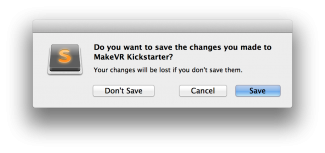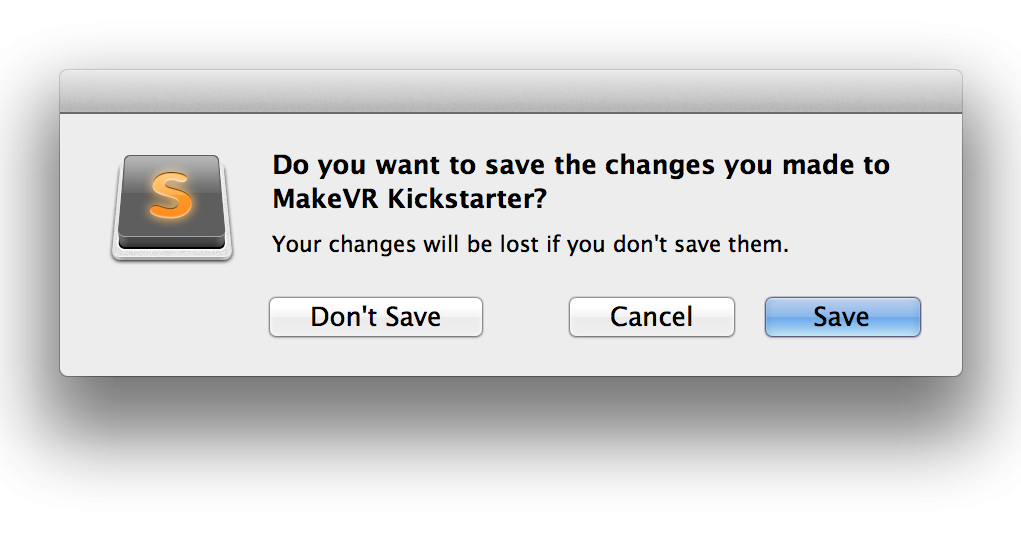 On the heels of yesterday’s story about major changes to Kickstarter reward levels and collaboration, Sixense announced today they are canceling the MakeVR campaign for now.
On the heels of yesterday’s story about major changes to Kickstarter reward levels and collaboration, Sixense announced today they are canceling the MakeVR campaign for now.
Sixense pledges to reboot the project on Kickstarter as soon as possible. Today’s update reads as follows:
Hi everyone,
After carefully considering all of the feedback we’ve received over the last few days from the Kickstarter community, as well as from our partners and our endorsers, we’ve decided to suspend the MakeVR Kickstarter project so that we can make some adjustments. We then plan to re-introduce MakeVR as soon as possible. Your comments have already resulted in some improvements, and the attention we’ve received has opened opportunities to create an even better offering.
In the meantime, we welcome your continued support, criticism, comments, and advice. That’s why we came to Kickstarter in the first place. Keep following this page as we’ll continue to respond to you and post updates. And look for an even better MakeVR soon!
Also, a special thank you to our current backers for your willingness to embrace new technology that will benefit many people across many disciplines in the near future.
-Amir Rubin & the MakeVR team
With the price and feature changes we outlined here yesterday, the end result was an odd assortment of reward tiers to choose from. Newcomers to the project would’ve seen lower price reward tiers offering better values than more expensive tiers.
We’ll see what their reboot plans look like. While I understand the appeal of the Kickstarter model, where you get a nice lump sum right away to fund startup development, Sixense’s situation is different in that the product already appears to be at least alpha quality, if not better; I’ve seen it in action. Why not get that product into the hands of eager early adopters as soon as possible? While that big check at the end of a successful Kickstarter is nice, it’s also desirable to have real users in the field using the product: they can evangelize, find bugs, help refine (or define) the road map, and create models to bootstrap a 3D model library.
Regardless of which model they choose next, I’d personally like to see the following occur:
Wide distribution.
Every PC with a Hydra or STEM plugged into it should have a copy of MakeVR on it. It could be a 30 day trial packaged with STEM, a version that limits model complexity, or something else, but get it out there. Look to the Rift community to see the amazing applications born by giving creative people the tools they need to turn their imaginations into real life.
Free collaboration.
Collaborate3D needs to be in the base product, though it doesn’t necessarily need to support 5 modelers and 2 viewers in a light edition. If it’s the key product differentiator Sixense says it is, then they need to get as many people using it as possible so they’re locked in.
Easy collaboration.
It’s nice the product allows collaboration, but it’s not always easy for clients to connect through various routers and firewalls to get to a host machine. I’m also assuming the host PC is the only machine in the network with a copy of the model while it’s being worked on, which brings data integrity and backups up as a potential issue. Offering cloud-based collaboration session hosting and storage would resolve these issues, and could be a potential source of revenue.
Don’t sell a product.
Sell an ecosystem. Attach to a 3D model marketplace for easy import of Creative Commons 3D models, and encourage sharing back to the community through open model licensing and easy sharing. Foster a vibrant community of makers.
Software can be a great business with nice margins. However, Sixense is in an interesting position. The strength of MakeVR lies in its innovative user interface, which requires the six degrees of freedom in each hand provided by Hydra or STEM. This is also a weakness, in that a possible user base of millions of people is intersected by the number of people who have (or are willing or able to purchase) the required custom controllers. Do you sell hardware at a premium and give the software away for pennies, hoping it would fuel more hardware sales? Or do you sell the software at a high margin and get the hardware into people’s hands at near-cost? Is Sixense a hardware or software company?
What do you think?







